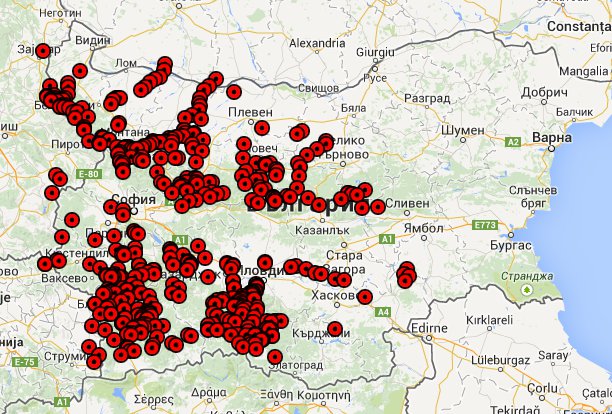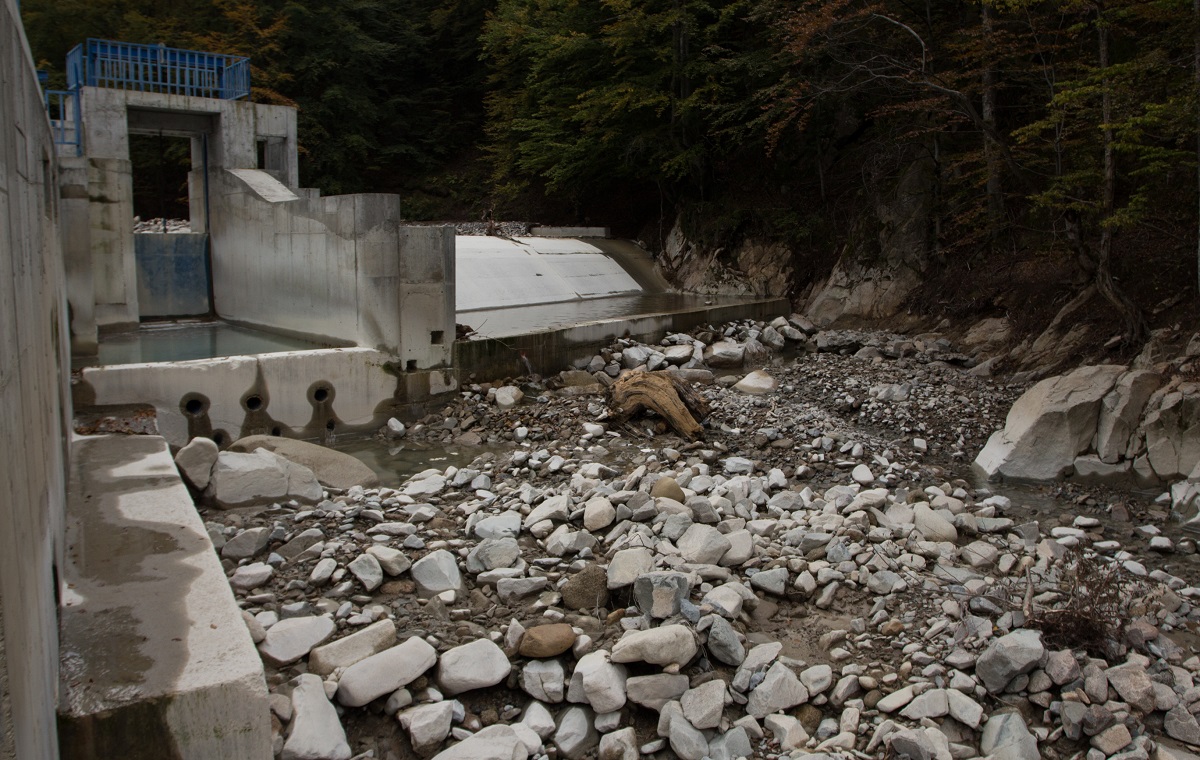Hello,
Welcome to the site for monitoring of the existing HPP / sHPP in Bulgaria.
About the project
This web site was developed as a joined initiative between Association "Balkanka Fishing Club" and WWF - Bulgaria The HPP data is provided via: WWF - Bulgarian Rivers In recent years, the construction of hydroelectric power plants in Bulgaria has undergone a rapid development. Renewable energy sources are a priority of the energy policy not only in Bulgaria but throughout the European Union as well. The production of energy utilizing the power of the water brings undoubted benefits for the whole country, because it creates a gross domestic product that does not require import of resources, increases energy independence, etc. When we launched this platform in August 2014, we were not totally opposing the use of the rivers for such a purpose, as long as the production of energy from the water meets the ``environmental norms'' so that life in and around the rivers could survive. Unfortunately, our experience over the years has proven that there is simply no way that the rivers will not be dried up by small hydropower in the pursuit of bigger profits. The reason lies in the fact that 75% on the average of the annual runoff flows into our rivers during April, May and June, and only about 25% of the annual runoff remains for the rest nine months, e.g. about 3% per month on the average, that is. With the requirement of the law to discharge 10% of the average multi-annual water quantities /unless the natural runoff s smaller/, this means that apart from April, May and June, the small hydropower plants should not be working at all during low water periods and their owners will go bankrupt if they do not steal all the water from the rivers during the dry months! The statistics show that there are currently about 247 hydroelectric power plants operating in Bulgaria, not counting the plants under the big dams, most of which are constructed more than 40 years ago. Another nearly 250 HPP investment plans are at a different stage of progress and have already received Water permits for use of a surface water body from the River Basin Directorates. Some of these are in he middle of construction, but most are in a stage of searching for finaces. Yet their construction can begin at any moment if funding is provided by banks or by any other financial institutions. The exact number of all future HPPs cannot be stated, but at the present moment there are appropriate spots located for the construction of additional at least 400 locations on the rivers . Even the data in the registers of the state agencies vary and is incomplete. For example, for the West Aegean Basin Basin Directorate, the total number of Water permits for hydropower is 516 - these are double the existing number of plants only in the smalest river basin in the Southwest of Bulgaria ... Map of all potential HPPs in Bulgaria considering the issued Water permits:

What is the hydropower sad reality in Bulgaria?
According to the current legislation, investors are required to comply with certain environmental standards when designing and subsequently building and operating HPPs. The most important requirements are :
- To release into the river a guaranteed minimum water flow below the intake - to secure the ecosystems' survival in and around the river.
- To provide options for fish and other aquatic species migration through appropriate fish passages - again for reproduction and survival.
- To remove and clean the silt accumulated in the ponds and not to discharge it abruptly into the rivers - a major problem for the run-off river and low-head power plants.
However, in real life none of the described requirements is followed, with quite a few /about 7%/ exceptions. Furthermore:
- Some rivers are literally dried up after the water catchments of the derivation type of power plants. This is because the enture river is diverted in the pipelines to produce more electricity and not a single drop of water is running in the riverbed between the catchment and the power house. Usually the distance between the two is several kilometers.

- In the prevailing number of cases the derivation hydro-power plants release such a small quantity of water only to feed a few puddles in the river without any running water in between.
- Abrupt silt discharge from the lakes of the run-of-river plants - this leads to mass killing of fish and other species - like it happened with HPP Lakatnik in 2008, as well as with the Luna HPP in 2016.
- No fish can pass through the fish passes (with a very few exceptions). There are fish ladders impassible for animals with legs or mountain climbers. There are even plants which do not have and fish pass of any kind.
- Permanent drying of the riverbeds - this leads to situations when trees and other vegetation block the river bed which is a predicament for future floods during high waters. Such an example is the Zlatna Panega river beneath the water abstraction facility of HPP Rumiancevo
In recent years, separate people or organizations have sent many signals for such problems to the Ministry of the Environment and Waters and / or to the River Basin Directorates. In some cases, after the inspections, small fines were imposed on the owners (less than the daily profit of a HPP). Mandatory prescriptions have also been given to some of them, which are not followed, simply because there isn't any subsequent control. In some cases there is no reaction from the Min Env and the Basin Directorates at all. In any case - with or without the prescriptions - the situation remains unchanged during our next visits!
What is the main purpose of this site?
For every violation of the environmental rules we do our best to fight it, since the authorities do not care at all. Therefore it is necessary to carry out a permanent public control on the operation of as many hydropower plants as possible and to compile the results of the control in a comprehensive database, which is constantly updated and developed. At any given moment it can be established what was the situation back in time: 1. How a particular HPP was operating? 2. What has been done in order to eliminate the violations? 3. How does it work now? In this way, the information gathered becomes accessible to the public, to the media and to the controlling authorities at national and European level.
An equally important goal is to show the good examples where all the requirements are met. Thus we can prove that the production of hydroelectricity is possible without a breach of the legislation. All investors which follow the rules are among the most interested parties in forcing all the rest investors to follow the regulations too. The sooner they realize it the better. Unfortunately only a few of them have come to such an understanding. We have a very clear message - WE ARE NOT AGAINST Hydropower BUT, as long as most of the HPPs/more than 90%/are operating in a way which violently destroys the rivers, we will do our best this sad reality to change.
Important for the English users: Please note that the individual status for a visit at a given HPP water catchment holds a description that is still not translated. We apologize for that, but hope that the pictures and the videos are clear enough and speak for themselves.
Who are we?
WE are a group of organizations, united with the hope that the scarce river life in Bulgarian rivers CAN STILL BE SAVED:

